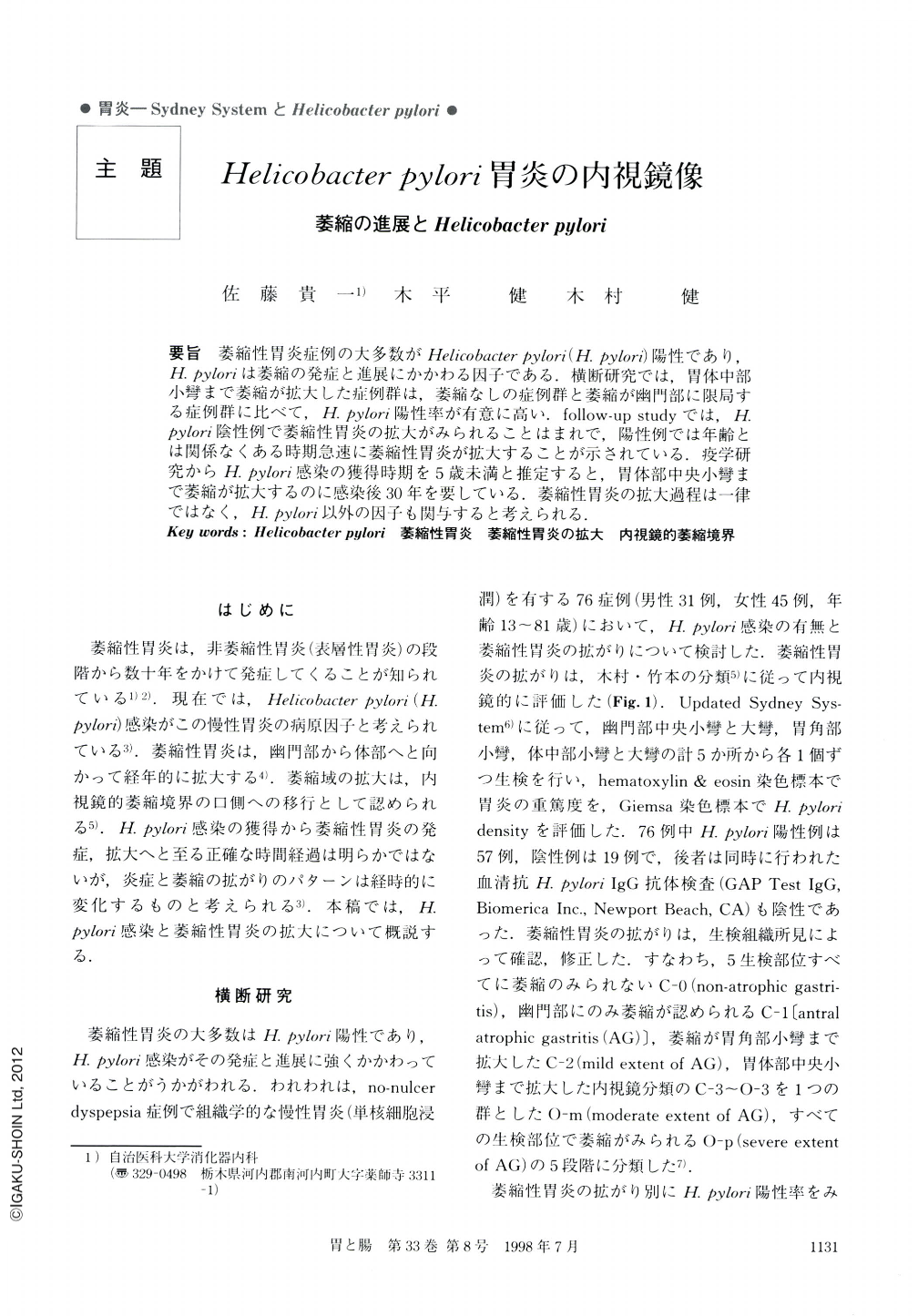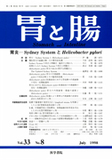Japanese
English
- 有料閲覧
- Abstract 文献概要
- 1ページ目 Look Inside
- サイト内被引用 Cited by
要旨 萎縮性胃炎症例の大多数がHelicobacter Pylori(H. Pylori)陽性であり,H. Pyloriは萎縮の発症と進展にかかわる因子である.横断研究では,胃体中部小彎まで萎縮が拡大した症例群は,萎縮なしの症例群と萎縮が幽門部に限局する症例群に比べて,H. pylori陽性率が有意に高い.follow-up studyでは,H. Pylori陰性例で萎縮性胃炎の拡大がみられることはまれで,陽性例では年齢とは関係なくある時期急速に萎縮性胃炎が拡大することが示されている.疫学研究からH. Pylori感染の獲得時期を5歳未満と推定すると,胃体部中央小彎まで萎縮が拡大するのに感染後30年を要している.萎縮性胃炎の拡大過程は一律ではなく,H. Pylori以外の因子も関与すると考えられる.
Helicobacter pylori is considered a causative factor in the development and extension of atrophic gastritis, because most patients with atrophic gastritis are infected with H. pylori. Our cross-sectional study showed that the prevalence of H. pylori infection was significantly higher in patients with a moderate extent of atrophic gastritis (extending to the lesser curvature of the body) (97%, 33/34) than in those with non-atrophic (32%, 6/19) and antral atrophic gastritis (64%, 7/11). A four-year follow-up study of Sakaki et al. (Gastroenterol Endosc 38: 1587-1589, 1996) showed that the extension of atrophic gastritis was found in 31% of H. pylori-positive patients, but in none of those without H. pylori infection. Assuming that the acquisition of H. pylori infection occurs in childhood (less than five years of age), these studies suggest that atrophic gastritis extends to the lesser curvature of the body about 30 years after its acquisition. The time and speed of the extension of atrophic gastritis are different in each patient, and some factors other than H. pylori infection may also be involved in the extension.

Copyright © 1998, Igaku-Shoin Ltd. All rights reserved.


